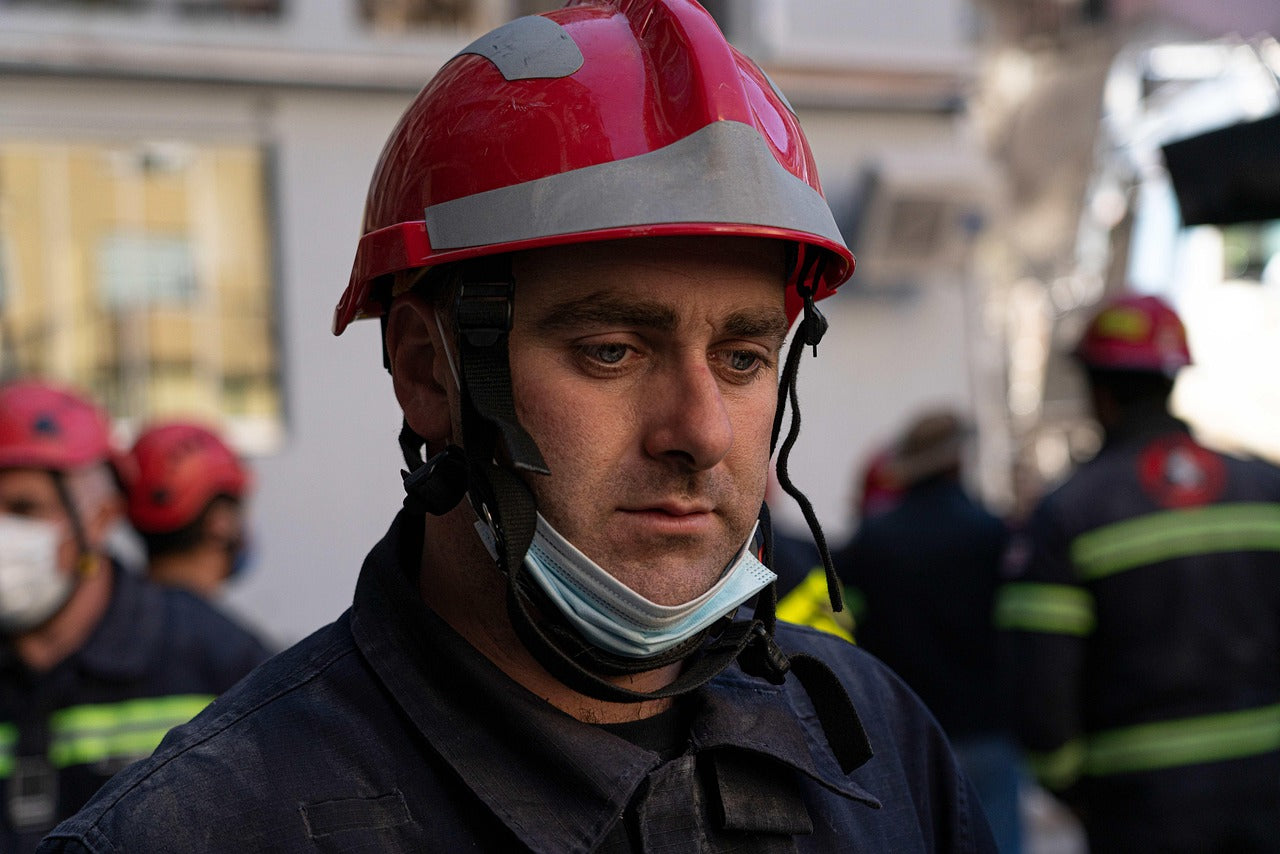A firefighter’s helmet isn’t just a piece of gear. It’s a symbol — of courage, legacy, identity. Some wear it with the same pride others carry for family crests or military badges. And when you’re part of something that deep, personalizing your helmet becomes more than just “making it look cool.” It’s about honoring the job, the brotherhood, the stories behind the soot.
Custom fire helmet paintwork is about identity and meaning — whether it's a small tribute to your first station or a bold statement in red, chrome, or camo. And if done right, it doesn’t just look good. It lasts through heat, chaos, and time.
This guide walks through everything — from the prep to the paint, from safety checks to decals — so you can get that helmet looking like it tells your story.
Preparing Your Helmet for Painting
Step 1: The Strip-Down
Before any art happens, your helmet needs to be stripped of any removable gear — liners, straps, face shields, even the label if you're painting the full shell. Keep those parts clean and tucked aside. Trust me, you do not want paint getting on those.
Step 2: Clean Like It Matters
Helmets collect everything — ash, grime, oils from your hands. Grab some mild soap and lukewarm water. Scrub the surface until it's squeaky clean. No shortcuts. Dirt or leftover residue can cause your paint to peel later.
Step 3: Scuff That Surface
Use fine-grit sandpaper (400–600) and give the shell a light sanding. This helps the primer grip the surface better. Don’t go overboard; just enough to dull the shine and rough it up a bit.
Step 4: Pick the Right Paint
Here’s where it gets serious. You can’t use just any paint. It has to be heat-resistant, non-conductive, and flexible enough not to crack. Flame-resistant paints or flexible acrylic-based paints are the gold standard. Many use automotive-grade paints or even premium acrylics made for leather and plastic — which come in custom-friendly colors like neons, metallics, and matte finish.
Design Ideas for Firefighter Helmets
Personal & Powerful Themes
What’s cool about firefighter helmet art is how personal it gets. Some themes to spark inspiration:
-
Patriotic Vibes – American flags, bald eagles, unit mottos.
-
Commemorative Work – Memorial dates, fallen firefighter tributes.
-
Personal Symbols – Skull motifs, tribal lines, crosses, shields.
-
Minimalist Designs – Just station numbers or clean stripes.
Rank & Station Shoutouts
Your helmet can say a lot without saying much. Use painted initials, numbers, or symbols to rep your rank and station. Company number, nickname, shift — it all matters.
-
Lieutenants and captains might go for gold or chrome tones.
-
Rookie helmets can show progression with subtle striping.
-
Specialized roles like rescue, truck, or hazmat might get distinct icons.
Step-by-Step Guide to Painting Your Helmet
What You’ll Need:
-
Flame-resistant or flexible acrylic paint
-
Painter's tape and masking film
-
Lint-free cloth
-
Sandpaper (400–600 grit)
-
Primer (plastic-safe)
-
Gloves, respirator, patience
Step 1: Tape It Up
Use masking tape to protect vents, labels (if keeping), and inner edges. Wrap plastic film around areas that shouldn’t get sprayed or brushed.
Step 2: Apply the Primer
Go for multiple thin coats. Let each layer dry fully before the next. You want a solid matte base, no drips. White or gray primers are great for making colors pop.
Step 3: Time to Paint
-
Hand Painting: Ideal for small details, names, or pin-striping.
-
Stenciling: Use laser-cut vinyl stencils for clean logos or fonts.
-
Airbrushing: Best for full gradients, fades, or layered effects.
Apply light coats, build it up gradually. Always start your spray slightly before the helmet and release after to avoid blotching. Let every coat dry thoroughly.
Step 4: Dry and Inspect
Don’t rush. Let the helmet sit for at least 24 hours in a clean, dry spot. Then check for any spots needing touch-up or smoothing.
Applying Finishes and Protective Coatings
Choosing the Right Finish
Once your design is locked in, it’s time to seal it up. This is what protects your paint from scratches, UV, heat, and firefighting conditions.
Types of finishes:
-
Gloss Clear Coat – High shine, vibrant look
-
Matte Finish – Subtle, clean, and less reflective
-
Urethane Clear Coat – Extra durability, scratch resistance
Applying the Finish
Use a clean brush or spray, and again — light coats. Too much too fast and it’ll bubble or run. Two to three coats are usually solid. Let each dry fully before moving on.
Custom Decals and Stickers
Not everyone’s an artist with a brush. No shame there. Decals and stickers give you pro-level design without the learning curve.
Using Decals:
-
Ideal for detailed logos, nameplates, symbols.
-
Can be custom ordered with waterproof, heat-resistant vinyl.
-
Apply only after painting and before your final clear coat.
Where to Find Good Decals:
Check specialty firefighter gear shops or custom vinyl designers. Some print shops offer laser-cut stencils or reflective decals that work under clear coat finishes.
Want it really dialed? Some creators on Etsy or small-batch gear shops will do full custom sets based on your ideas.
Maintenance of Customized Helmets
Keep It Clean
-
Wipe down with a damp cloth after each use.
-
Avoid harsh cleaners — they’ll eat at the paint and clear coat.
-
Store your helmet somewhere dry and safe from sharp knocks.
Touch-Ups Over Time
-
Small chips? Use detail brushes to fill them in.
-
Yellowing clear coat? Strip it and refinish when needed.
-
Peel on decals? Remove, re-clean the spot, and reapply new ones.
Like boots or turnout gear, your helmet will take hits. Maintenance keeps the look alive and professional.
Legal and Safety Considerations
Before going wild with creativity, know your department’s regulations.
Check These First:
-
Material Type: Thermoplastic helmets often can’t be painted due to chemical reactions.
-
NFPA Guidelines: While painting isn’t always banned, it can void manufacturer warranties or compromise structure if done wrong.
-
Chain of Command Approval: Some departments require sign-off before modifying gear.
What to Avoid:
-
Spray paints with high solvents (can weaken materials)
-
Adding weighty attachments or thick layers of coating
-
Covering manufacturer labels or safety instructions
Always use heat-rated products and double-check that your changes won’t void certification.
Showcase and Inspiration
Some helmets out there? Straight-up works of art. We’ve seen everything from graffiti-style urban designs to airbrushed tributes with photorealistic portraits.
Popular Custom Styles:
-
Battle-Worn Distressing: Paint chips and burn marks (faux, of course) for that "seasoned vet" look.
-
Red, White, and Blue Themes: Flags, eagles, and “343” nods to fallen heroes.
-
Glow-in-the-Dark Stripes: Using special paints that light up in low light.
-
Comic Book Inspired Art: From Punisher skulls to Captain America shields.
The stories behind these designs are powerful. One helmet featured every station number its owner served at, with a small gold stripe added for each major rescue call. Another showed a firefighter’s daughter’s drawing turned into a permanent helmet design.
That’s the magic of custom paint — it's not just about looks. It’s about legacy.
(Source: @custheartist)
A custom fire helmet is more than gear — it’s a badge of identity. Painting it with intention, skill, and a bit of flair turns it into a living story. Whether you go bold and full-graphic or stick with clean lines and sharp symbols, your helmet becomes yours in every way.
If you’re looking to make that kind of mark, use quality materials that stand up to the heat — literally and figuratively. Many pros and hobbyists alike turn to trusted products known for durability, flex, and pro finishes. The range of paint, additives, and tools from Angelus Direct has become a favorite among those looking for serious results in creative custom work.
Just remember: prep with care, paint with patience, and wear it with pride.
FAQs
1. What types of paint are safe to use on a firefighter’s helmet?
Only heat-resistant, non-conductive paints should be used. Acrylic-based paints with added flexibility are preferred, especially ones that don’t compromise the helmet’s structure. Brands that offer specialty paints for leather, plastics, and extreme wear — like those available through Angelus Direct — can be repurposed for helmet art with the right prep.
2. How often should a customized helmet be inspected?
Every few months or after any major incident. Look for cracking, chipping, or signs that the protective coating is fading. Even if the design still looks great, safety should always come first.
3. Can custom paint affect the helmet’s heat resistance?
Yes, if the wrong paint is used. Solvent-heavy or flammable paints can compromise materials. Always go with paint types that are tested for high heat and chemical resistance.
4. Are there any finishes that should be avoided?
Avoid glossy automotive-style finishes with heavy VOCs or those not rated for high temperatures. Stick with acrylic or urethane finishes designed for outdoor, high-wear applications.
5. How to restore a helmet to its original state?
It depends on the material. Some paint can be stripped with isopropyl alcohol or acetone-free cleaners. But in most cases, complete restoration means sanding down and re-priming, or even replacing the outer shell if it’s been compromised.

